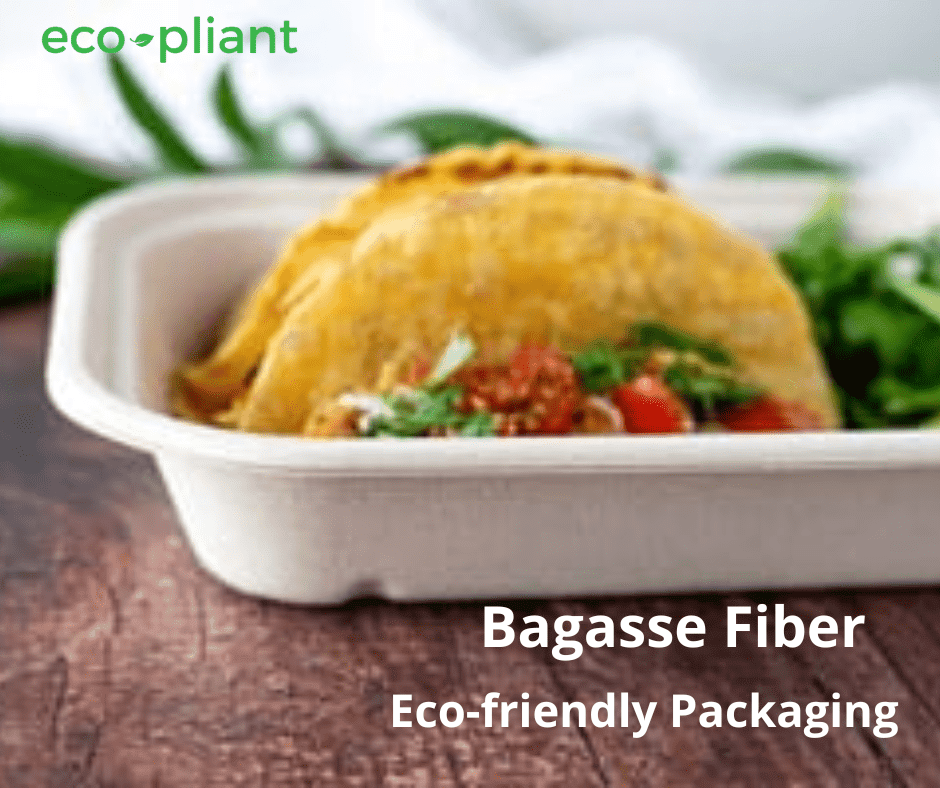
Bagasse Fiber: A Comprehensive Material Summary
With the cry for more plastic and less plastic simultaneously echoing across the planet, one thing is for sure, there are alternatives to plastic, styrofoam, and other potentially harmful packaging choices.
Bagasse fiber is one of them.
What is Bagasse Fiber
Bagasse (/bəˈɡæs/ bə-GAS)
What is it?
In short, it’s a byproduct of the sugarcane industry. Bagasse is made up of fibers that are left over after the cane is pressed for its juice. This material then is processed into a pulp that can be molded into different products, such as compostable fiber bowls and lids that are used in eco friendly take out containers.
With packaging alternatives being in high demand, coupled with the environmental issues concerning plastic, styrofoam, and other harmful types of packaging, alternatives are needed that are eco-friendly, sustainable, and compostable.
In one study it is reported…
“Over 40% of all industrial packaging is devoted to food wrapping and packaging (a global market worth over $56 Bn) with 40% of food packages made from plastics” ¹
Bagasse fiber is a prime example of better alternatives in food packaging that is environmentally friendly, sustainable, compostable, and biodegradable.
Bagasse Fiber is Made From Sustainable Materials
Sustainability is a huge buzzword in the demands that consumers are presenting.
Materials that will still be available for future generations to use is a simple definition of sustainability.
Lessening environmental impact and avoiding the depletion of natural sources is the goal of sustainability.
Bagasse is made up of materials that are byproducts of fast-growing sources making it a perfect example of sustainability.
The sugarcane plant matures in one year, compared to other materials, that’s extremely fast.
Low environmental impact plus the speed of growth creates a product that ranks high in sustainability.
Compostable and Biodegradable
Keeping materials out of landfills is becoming more and more important. The compostability of packaging is another way to relieve the overwhelming amounts of trash that go into the landfill daily.
Bagasse can be composted using industrial methods and be fully broken down within 2-4 months.
If the packaging does end up in a landfill, having a material that is also biodegradable is important.
A compostable product can be reused as a fertilizer, while biodegradability means that it can be broken down by bacteria and organisms naturally, and eventually return to a natural state without causing any environmental issues.
Bagasse fiber container packaging is a compostable, biodegradable, eco-friendly product.
Usability of Bagasse Food packaging
Usability refers to packaging performance.
- Design
- Sturdiness
- Microwaveable
- Durability
- Functionality
- Freezer Safe
Bagasse fiber can be molded and pressed into functional designs like food containers, hot and cold portion containers, and tableware.
It is durable enough to take the cold as well as the heat. The high-end temperatures are where the only possible issue is around 95℃ or 203°F, which is just short of the boiling point. Other than that fiber food packaging could be considered faultless.
Bagasse is microwaveable.
Eco-friendly options that are functional and durable score high in packaging performance.
Better Choice
Listening to what consumers are demanding when it comes to compostable packaging is good business. Take-out or leftover togo food will be kept secure during transport and held secure during refrigeration.
Environmentally safe and sustainable sugarcane bagasse, wheatgrass, bamboo, and silver grass are all potential components of fiber bowls.
Eco-pliant stays at the forefront of science and sustainability, always innovating new ways to create compostable food packaging and bio-based materials.
#biofoam #eco friendly #biodegradable #biodegradablefoam
¹ Molded pulp fibers for disposable food packaging: A state-of-the-art review
Photo by Adrienne Andersen: https://www.pexels.com/photo/sugar-canes-2254097/
Bagasse Chart https://www.sciencedirect.com/science/article/pii/S2590238520305580

